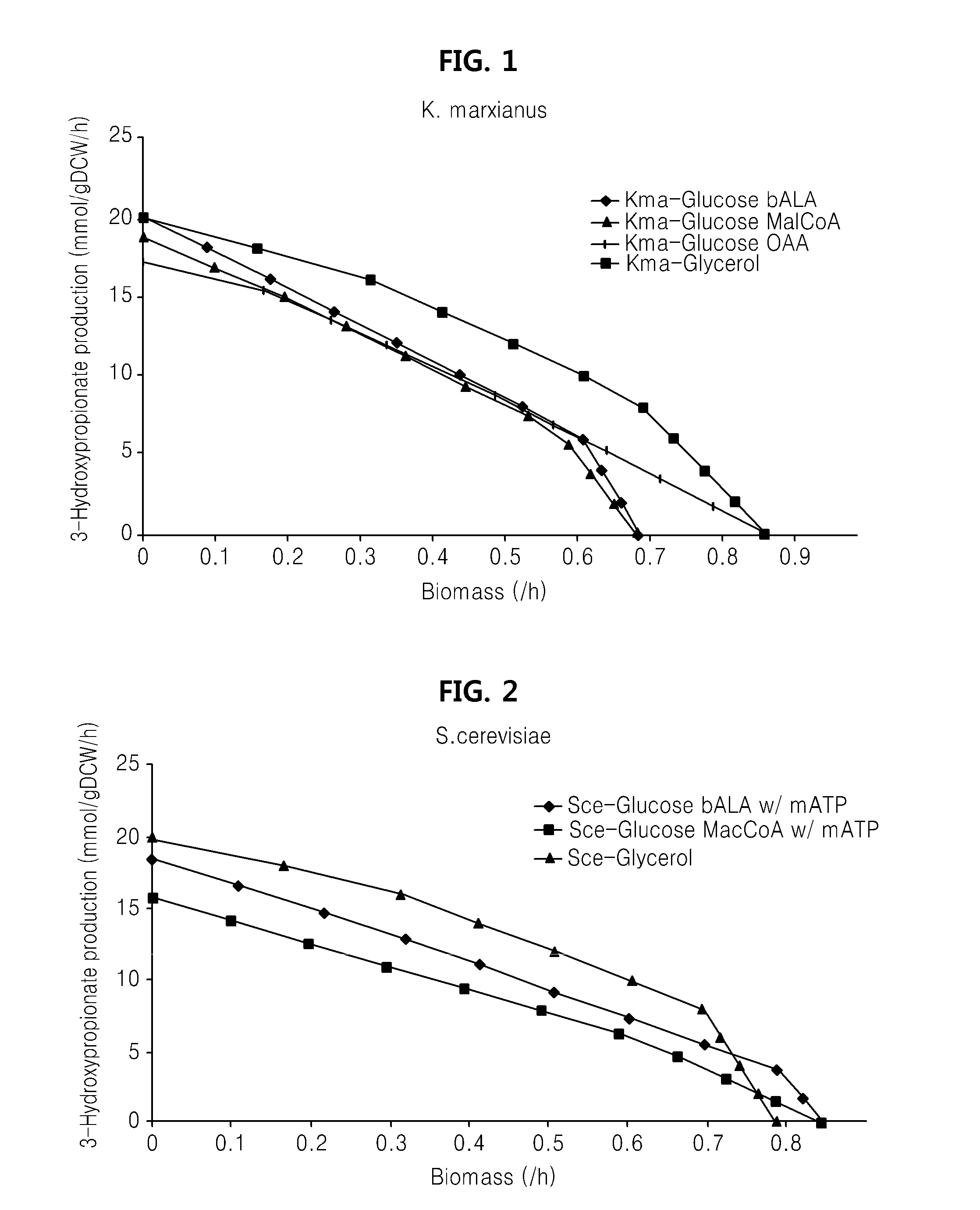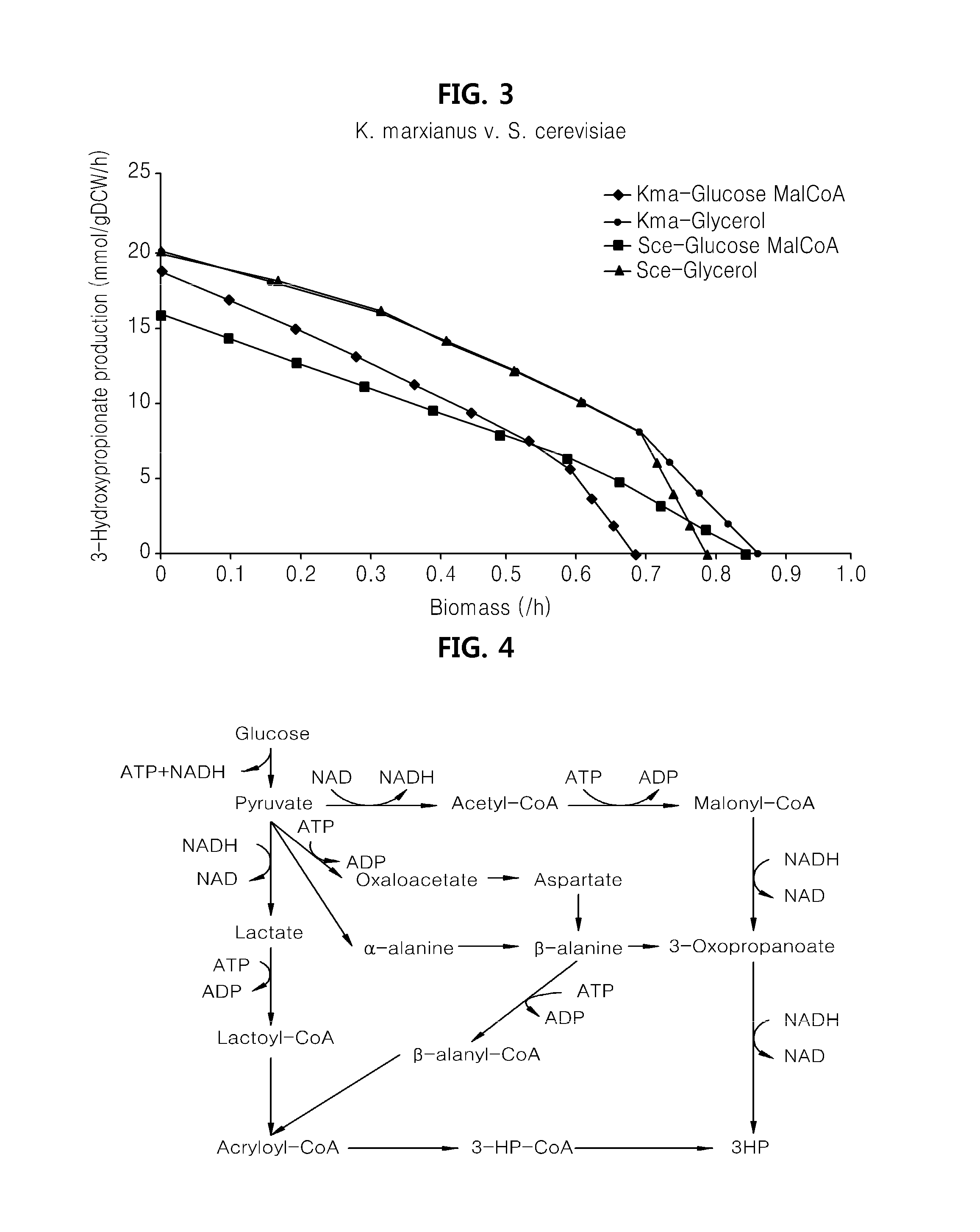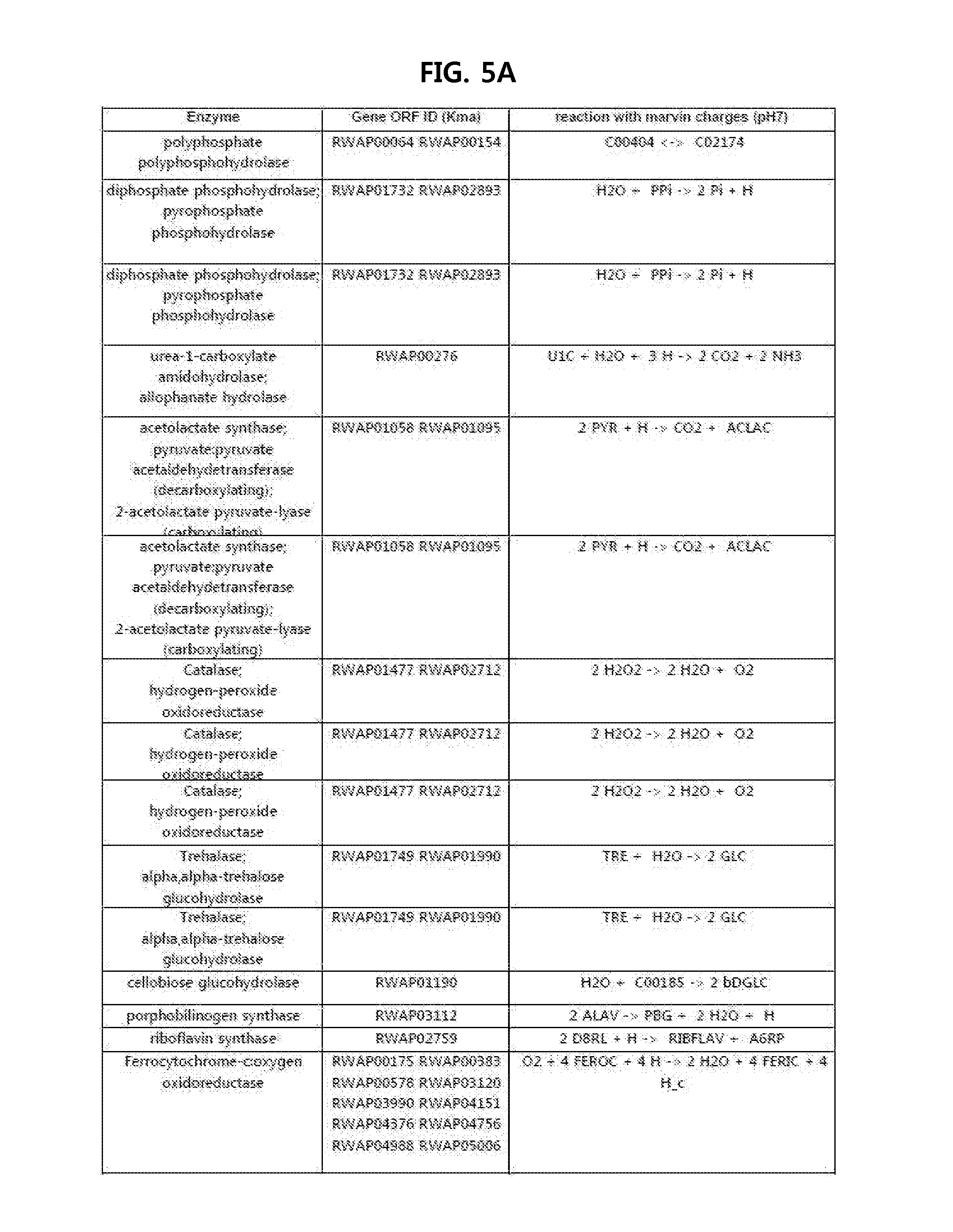Genome-scale metabolic network model reconstruction of kluyveromyces marxianus and strategies for engineering non-native pathways for 3-hydroxypropionate production in kluyveromyces marxianus
a metabolic network model and genome-scale technology, applied in the field of metabolic network models, can solve the problems of difficult to estimate the changes in the metabolic pathway of microorganisms, and a lot of time may be needed to verify any changes
- Summary
- Abstract
- Description
- Claims
- Application Information
AI Technical Summary
Benefits of technology
Problems solved by technology
Method used
Image
Examples
example 1
Cell Composition Analysis of K. Marxianus
[0085]A biomass synthesis equation of cells that is essential for a metabolic network was constructed using the information of various texts, and information acquired from reference to strains in close relation or direct analysis of samples acquired from actual fermentation for sections without information from texts.
[0086]First, each of macromolecular compositions that form cells was collected. It was assumed that cells for the embodiment consist of protein, RNA, DNA, phospholipids, cell wall (polysaccharides), and other compositions of small quantities.
[0087]The amino acid composition analysis of proteins was acquired by requesting analysis of the sample acquired from fermentation of K. marxianus to the Proteomics Team of the Korea Basic Science Institute (KBSI). Also, the composition analysis of nucleotides that form DNA was acquired by analyzing the composition of a nucleic base sequence, since the nucleic base sequence was already fully...
example 2
Identification of Excellence of K. Marxianus as a 3HP Producing Strain and Estimation of 3HP Productivity Optimized Pathway Through Metabolic Network Construction and Metabolic Flux Analysis of K. marxianus
[0098]A draft metabolic network of K. marxianus was constructed using the strain's cell composition information and GPR relationships (gene-protein-reaction relationship) for enzyme reaction equations that were acquired based on genomic information of K. marxianus. Three enzyme reactions that may be introduced to K. marxianus were added for producing a metabolic product (3HP in this case) to construct a metabolic network of 3HP producing K. marxianus.
[0099]The constructed metabolic network was applied to select an external enzyme reaction that provides the most optimized metabolic pathway. At this time, a 3HP producing reaction rate and a cell growth rate were selected as object functions to identify whether the most appropriate optimized metabolic pathway is provided by identif...
PUM
| Property | Measurement | Unit |
|---|---|---|
| chemical reactions | aaaaa | aaaaa |
| partial pressure | aaaaa | aaaaa |
| macromolecular composition | aaaaa | aaaaa |
Abstract
Description
Claims
Application Information
 Login to View More
Login to View More - R&D
- Intellectual Property
- Life Sciences
- Materials
- Tech Scout
- Unparalleled Data Quality
- Higher Quality Content
- 60% Fewer Hallucinations
Browse by: Latest US Patents, China's latest patents, Technical Efficacy Thesaurus, Application Domain, Technology Topic, Popular Technical Reports.
© 2025 PatSnap. All rights reserved.Legal|Privacy policy|Modern Slavery Act Transparency Statement|Sitemap|About US| Contact US: help@patsnap.com



